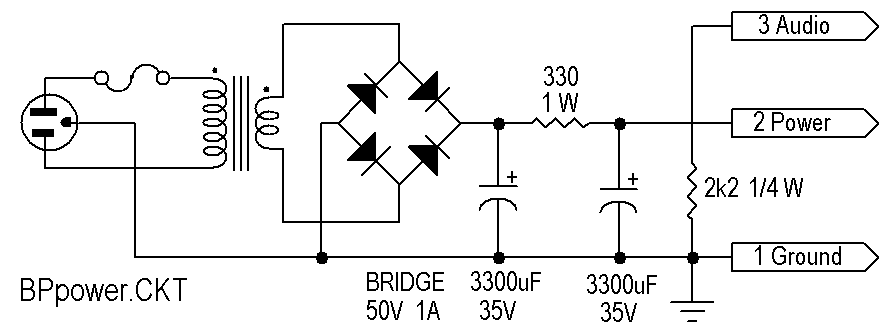
Power Supply Requirements
Basic Requirement This system requires 24-30 volts of well-filtered DC power applied to pin 2 of each unit. Allow for 50-100 mA per unit when calculating the power required for your proposed system. Note that when using the suggested interface to camera CCUs, no power is used by the cameras.
Local Power When building a unit which has AC power available you can include a local power supply rather than drawing power from the bus circuit. This is especially recommended if building a circuit which requires above average power such as a loudspeaker, alarm, or enhanced call light circuit.
Joining Separate Circuits Multiple circuits (such as where separate circuits are used for the lighting crew) can be coupled together with a 10uF non-polar electrolytic capacitor. This keeps the calling signal (DC) inside the individual circuit while allowing the talk path to bridge the two circuits.
BeltPack size mini Power supply
I built one power supply into the same case as the belt pack units are housed in. I used parts from my junk box, so they may not all be available commercially. However none are critical and equivalent substitutes should be plentiful. The circuit is a simple unregulated power supply with an R/C output filter. This circuit produces around 25V DC at pin 2 of the output connector. This circuit also provides the termination for the audio bus (the 2.2K ohm resistor).

I used a Thordarson-Meissner transformer, part number PFC 294. It puts out 20V AC. This transformer has split primary and secondary windings, so it can be wired to run from either 110V or 220V power line ("mains") voltage. The power connector and fuse are selected for the power characteristics of your country.
The two capacitors and 330 ohm resistor provide low ripple (low-"hum") filter. I have used this unit with 3-4 belt packs. Note that when using the suggested interface to camera CCUs, no power is used by the cameras.